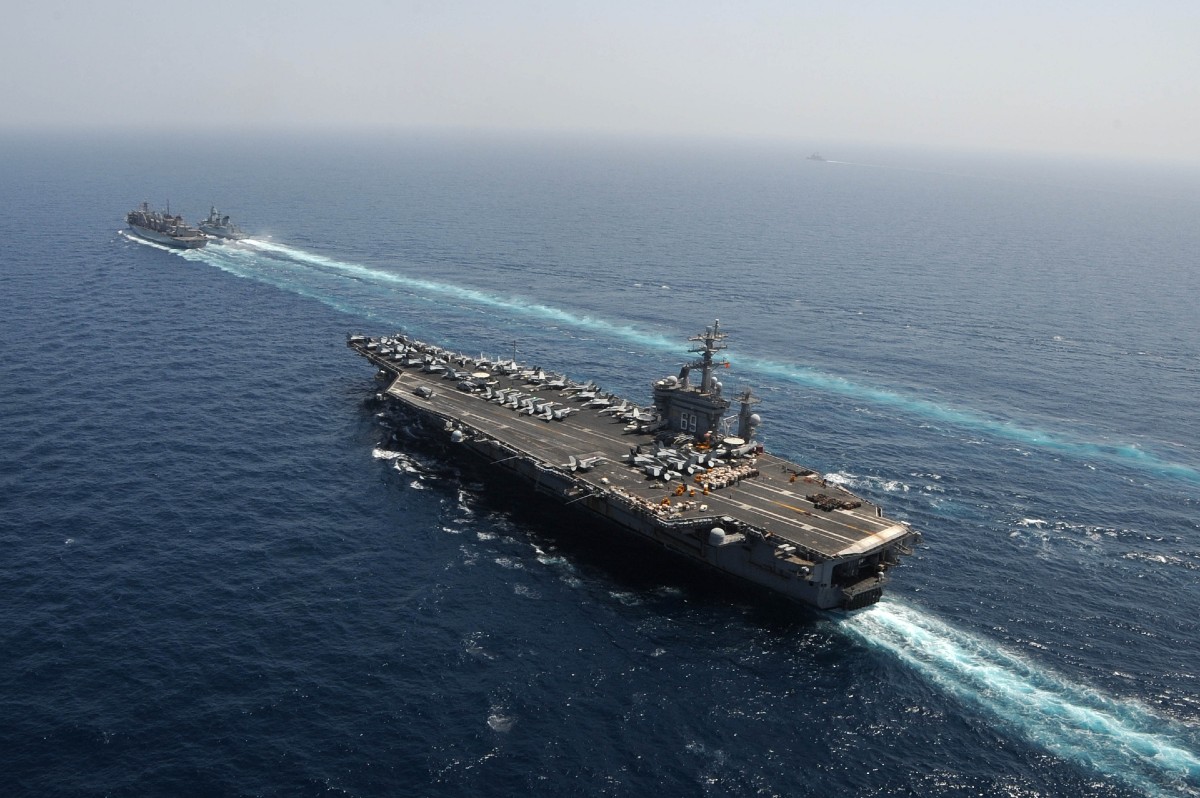Uncommon Knowledge
Newsweek is committed to challenging conventional wisdom and finding connections in the search for common ground.

Houthi rebels said they have launched strike attacks on the U.S. aircraft carrier USS Dwight D. Eisenhower in the Red Sea in response to recent military operations in Yemen.
Houthi military spokesperson Yahya Saree announced the missile strikes last Friday, but the Pentagon told Newsweek the report was false. Saree then announced another strike on Saturday, which he said was “the second targeting operation against the carrier during the past 24 hours,” according to Reuters.
Following the news, images appeared online that were said to show strike damage to the Eisenhower.
The Claim
A post on X (formerly Twitter) by user @iAmTheWarax, posted Monday and viewed 344,400 times said: “CONFIRMED: uss eisenhower (pictured docked for repairs in souda bay) hit and severely damaged by multiple houthi ballistic missiles.
“Judging by extensive tent city developing on the flight deck, we assess it is unlikely eisenhower will return to service in the foreseeable future,” the post said. It included a satellite picture of a docked ship.
Another post on X, by user @Alhussaini21S, went up Sunday and has been viewed 2.6 million times. According to a translation, it says: “Impaled.. #Eisenhower He is God”
The post included a satellite photo of what looks like an aircraft carrier with a large black mark on one of its runways.
The Facts
Neither of the images shared on social media shows damage to the Eisenhower. In fact, neither of the images was captured anywhere near the Red Sea, where the aircraft carrier has been involved in operations since January.
The U.S. and U.K. have been conducting strikes against Houthi targets in retaliation for attacks on international shipping. The British Ministry of Defense confirmed that recent operations targeted locations in Hodeidah, a city in western Yemen, housing drones and surface-to-air weapons.
The image posted Monday is of Russia’s Admiral Kuznetsov, an aircraft carrier that has repeatedly suffered damage. It is docked in a ship repair site in the Russian city of Murmansk, as images from Google show.
It is Russia’s only aircraft carrier, according to a report by Axios, and was due to return to the fleet in 2022 but caught fire the same year. Russian officials told the country’s state media it was going to return to service in the first quarter of this year.
The other image posted on social media is of the Eisenhower, but it is docked in Norfolk, Virginia, as satellite images from Google show. The alleged damage to the ship was added artificially.
For an impact as large as the fake photo appears to show, none of the ship’s surrounding areas appear damaged. In any case, this is not evidence of a Houthi missile strike.
Conflict between the Houthis and a Saudi-led coalition supported by the U.S. and the U.K. has been ongoing since 2015. The conflict has escalated in response to the Israel-Hamas war.
Recent strikes by the U.S. and U.K. targeted Houthi positions in the Yemeni provinces of Sanaa, Hodeidah and Taiz. In response, the Houthis launched what they described as a retaliatory missile attack on the Eisenhower.
A Pentagon spokesperson told Newsweek there have been no strikes on the Eisenhower or the Norfolk port where one of the satellite images was taken.
The Ruling

False
Neither of the photos shared on social media shows damage to the Eisenhower caused by Houthi missile strikes. One of the photos is of a Russian aircraft carrier based in Murmansk. The other is of the Eisenhower while it is docked in Norfolk, Virginia. The Pentagon told Newsweek there have been no strikes on the Eisenhower.
FACT CHECK BY Newsweek’s Fact Check team
Update 6/4/24, 11:49 a.m. ET: This story was updated to include comment from the Pentagon.
Newsweek is committed to challenging conventional wisdom and finding connections in the search for common ground.
Newsweek is committed to challenging conventional wisdom and finding connections in the search for common ground.